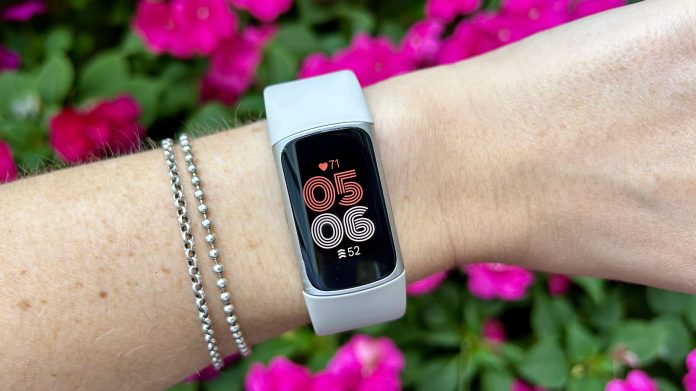With Google firmly in charge, how can the Fitbit Charge 6 expand on the success of its predecessor?
We tested the Charge 6 for many weeks, looking at how it performed during exercises, how it performed on a daily basis, and what it showed while sleeping.
Design & Display
- Bright 1.04-inch AMOLED screen
- Comfortable and lightweight with a bevy of bands to complement
- Button for swift navigation returns
If you liked the design of the Fitbit Charge 5, you’ll be pleased to discover that the Charge 6 is very identical. It has the same elegant aluminum casing in three different colors, as well as a comfy silicone band in two sizes. This is great news since it means you can continue to utilize your old bands and charger with this latest generation.
After a week on my wrist, I was impressed by how light and comfortable the Charge 6 was to wear. Because of the smooth edges and lightweight construction, you’ll nearly forget you’re wearing it before sleep.
I also want to highlight one significant feature that makes the Charge 6 far more user-friendly than its predecessor: the tactile button on the side.
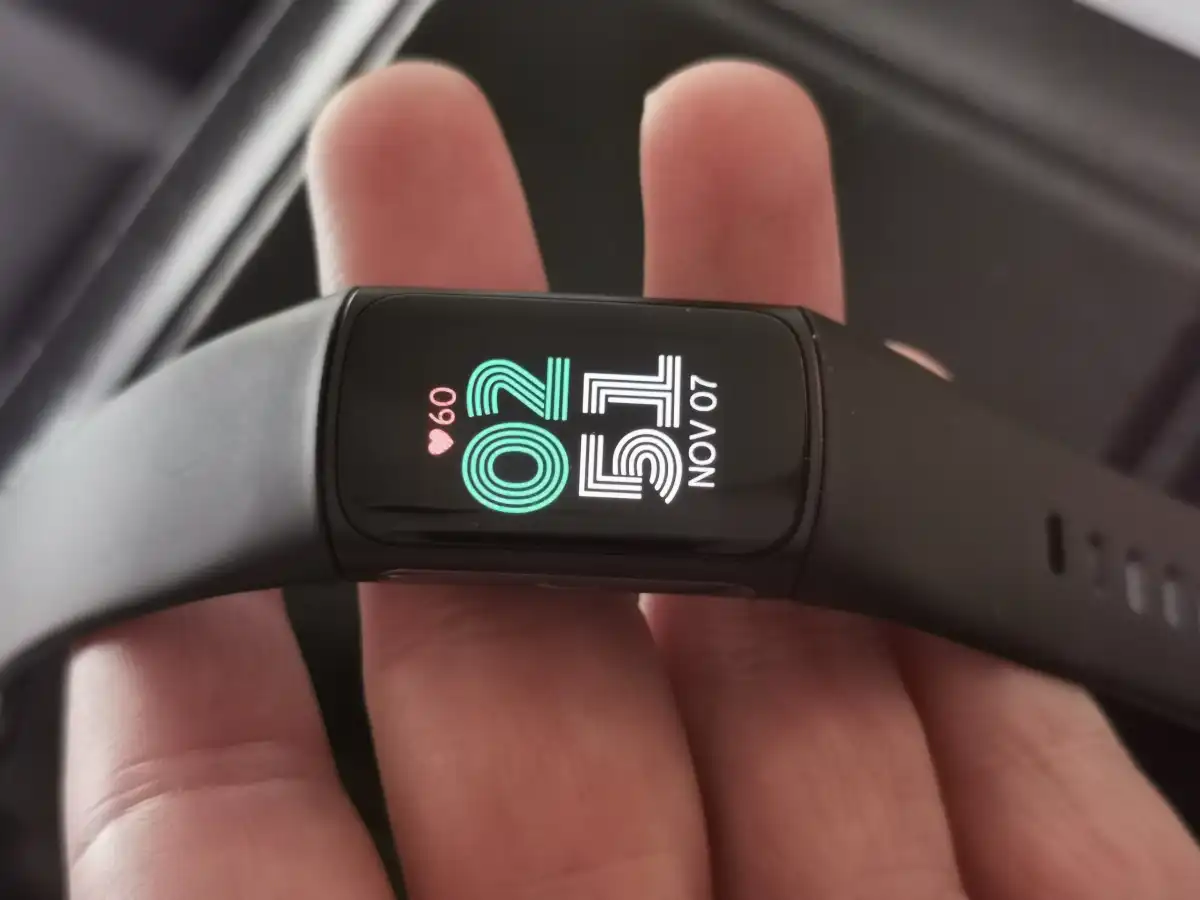
The button-less design of the Charge 5 was irritating and unstable, so I’m delighted to see it back on the Charge 6. The majority of navigation is still accomplished through a sequence of taps and swipes, but the nice haptic button improves the overall experience.
The Charge 6 is also waterproof up to 50 meters (a 5ATM certification), so you may use it when showering or swimming at your local lido. The sole drawback is that it does not monitor open-water swims, which is unfortunate for triathletes and sea-faring swimmers.
The front has the same 1.04-inch full-color AMOLED display that was presented last time. Because of its modest size, it’s best suited to displaying the time, your stats, and alerts – as long as you don’t anticipate a smartwatch-like experience, this shouldn’t disappoint.
You can still use the tilt-to-wake motion to turn on the screen, although response is still fairly unpredictable in practice.
Fitness & Health
- Syncs with most gym equipment
- ECG and EDA provide added insight
- Now with support for 40 exercise modes
The addition of a new AI-powered heart-rate sensor elevates it to the status of the most sophisticated Fitbit tracker to date. This sophisticated sensor can connect with suitable exercise equipment and offer you with individualized feedback on the go.
It checks your heart rate variability to determine how calm or stressed you are, and it also maintains track of your heart rate, breathing rate, changes in skin temperature, and provides help for monitoring menstrual periods via the app. It’s like wearing a personal wellness coach around your wrist.
Fortunately, the ECG (electrocardiogram) returns, allowing you to monitor your heart rhythm for indicators of atrial fibrillation. When compared to Apple’s ECG app, I’ve always been captivated by my heart health, when compared to Apple’s ECG app, the results from the Charge 6 compare favourably.
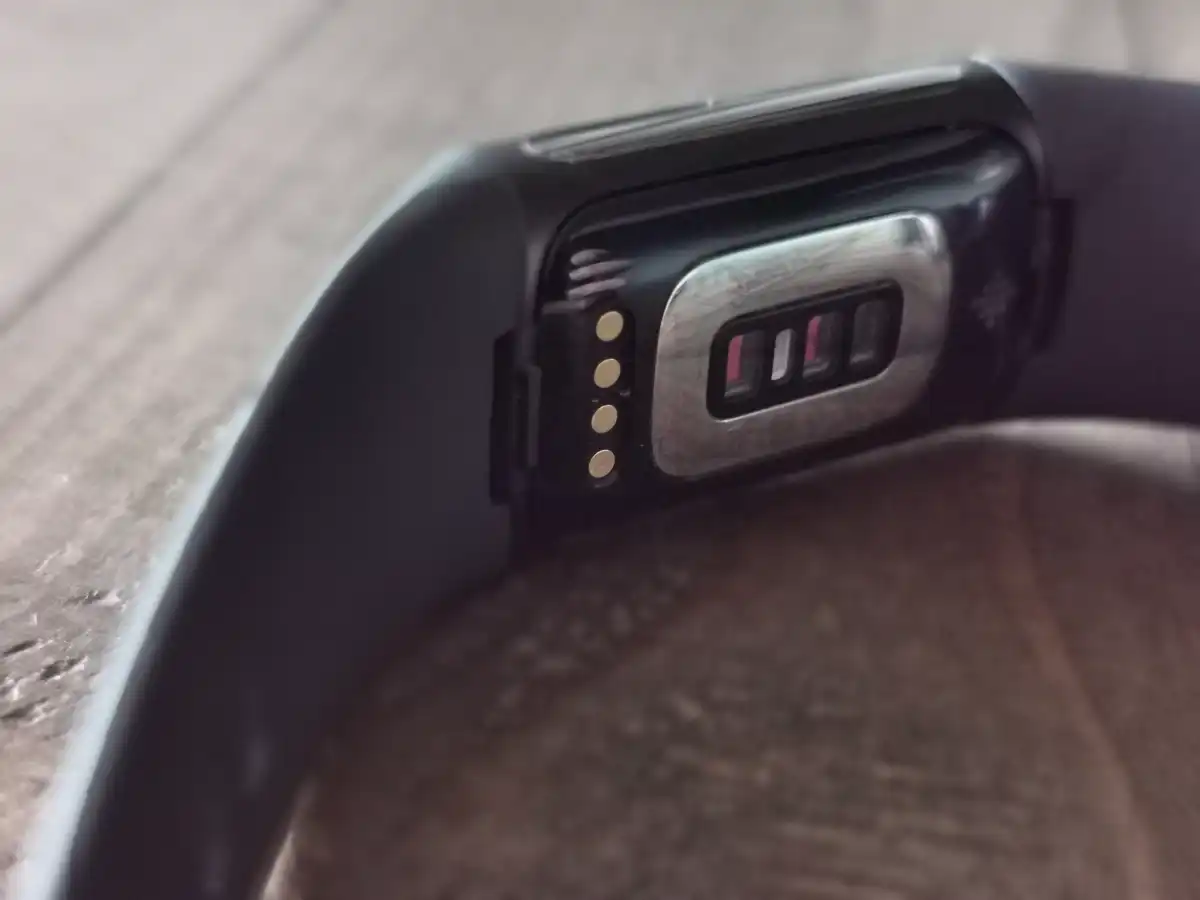
The EDA Scan returns as well, tracking changes in your heart rate and subtle electrical changes on your skin to give you an indication of how your body reacts to stress.
In terms of fitness, there are more than 40 training types to pick from this time around. These include 20 new alternatives such as HIIT (high-intensity interval training), strength training, and even snowboarding, though my schedule didn’t permit testing on the slopes.
Sleep monitoring is also making a comeback. The SpO2 pulse oximeter sensor in the Charge 6 records your REM, light, and deep sleep cycles, which helps shed light on your nocturnal behaviors.
If you want to go further into things like sleeping heart rate and restlessness, you’ll have to pay for Fitbit Premium, which is a bummer. You receive six months of the membership free, but you must pay a charge after that – more on this below.
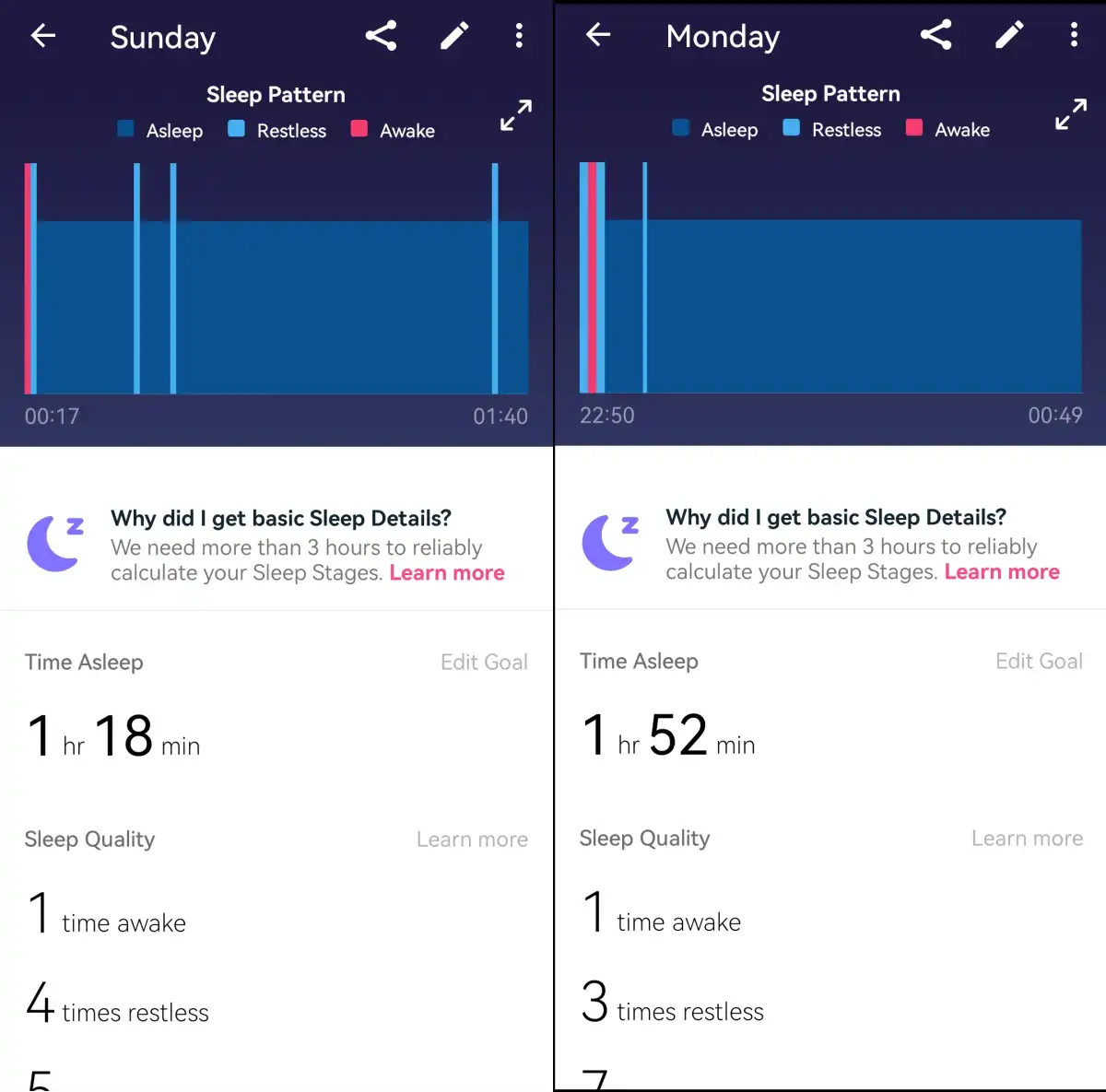
That is, in principle, how it should function… It wasn’t all plain sailing in my experience. My Charge 6 died about 12:54am, and I struggled to resurrect it the next morning.
Only the tried-and-true soft reset approach (find and hold the charger’s button three times for one-second intervals within a ten-second timeframe) brought it back to life. I could see it drained from 97% to 2% in 1hr 52 minutes based on the meager sleep data it managed to collect. The Charge 6 gave up after 1 hour and 18 minutes of recording on my next attempt.
I concede we must have a faulty unit, as this isn’t the usual high standard we’ve come to expect from Google. All the same, if it happened to me, it could happen to you too.
We are invtestigating this issue with Google and will update the review accordingly.
Features & Performance
- Added Google Pay and Maps
- Subpar GPS experience
- No Spotify support, tied to YouTube Music
Fitbit encourages you to leave your phone at home since the built-in GPS should allow you to track your distance simply. Fitbit has a patchy history in this area, so it came as no surprise that the global positioning service let me down yet again in practice.
The built-in GPS was excruciatingly sluggish to connect, and it occasionally didn’t work at all.
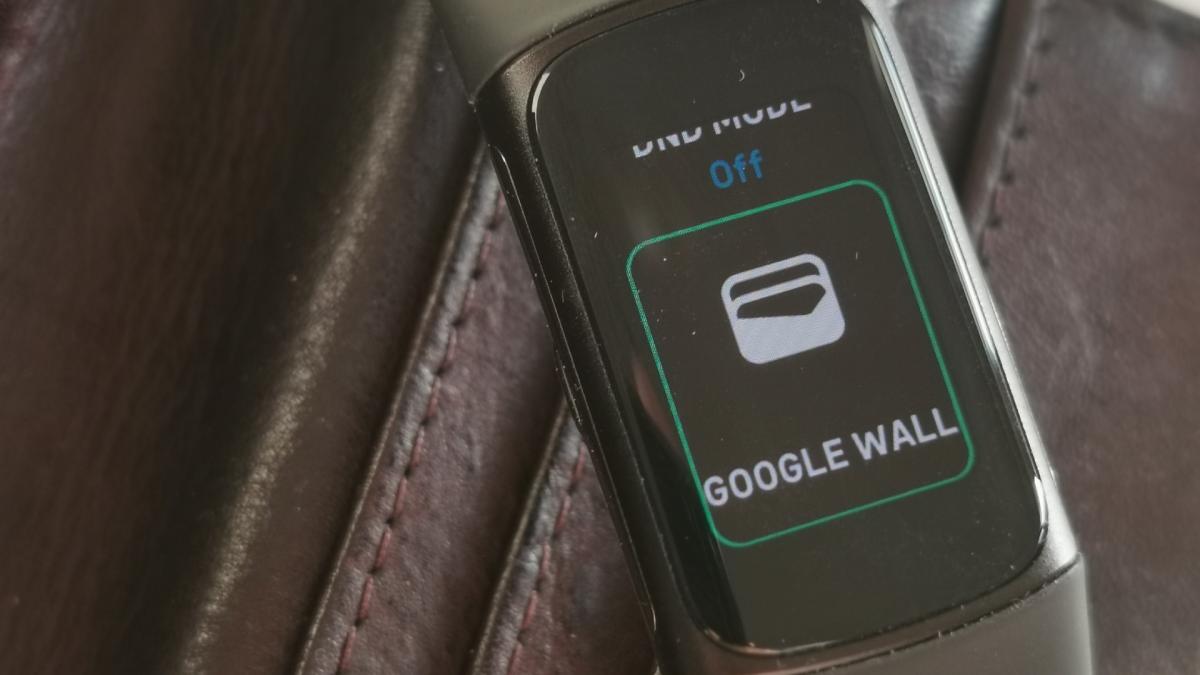
When I tried out the new dynamic GPS mode, it disconnected during my outside workout and switched to the less precise accelerometer tracking. Both indicate that Fitbit hasn’t learnt from its missteps with the Charge 5.
Because the Charge 6 represents complete integration into the Google ecosystem, Google Maps integration is built in. Obviously, the screen’s modest size restricts this experience slightly – it just gives turn-by-turn navigation – but it may be beneficial while visiting an unknown region and not having to grab for your phone.
On the same Google topic, if you want to listen to music while you’re out and about, you’d best have a YouTube Music subscription since Spotify has been dethroned as king of the dance this time.
However, support for Google Pay is more beneficial, so my perspective is split when it comes to Google’s tighter leash surrounding app support.
Battery Life & Charging
- Seven-day battery life is not unrealistic
- Fully charge inside of two hours
Aside from the sleep monitoring issue, I lasted 5 days with moderate daily use before getting antsy and thinking about recharging. That equates to about a 20% drain every day, however while attempting GPS use, this peaked in the 30% range.
Obviously, activating the always-on display will add additional strain (but it is quite eye-catching!) If you’re contemplating of getting a Fitbit and have comparable usage patterns, this is something to keep in mind.
I found it took just under two hours to restore the Charge 6 to 100% charge following full depletion.
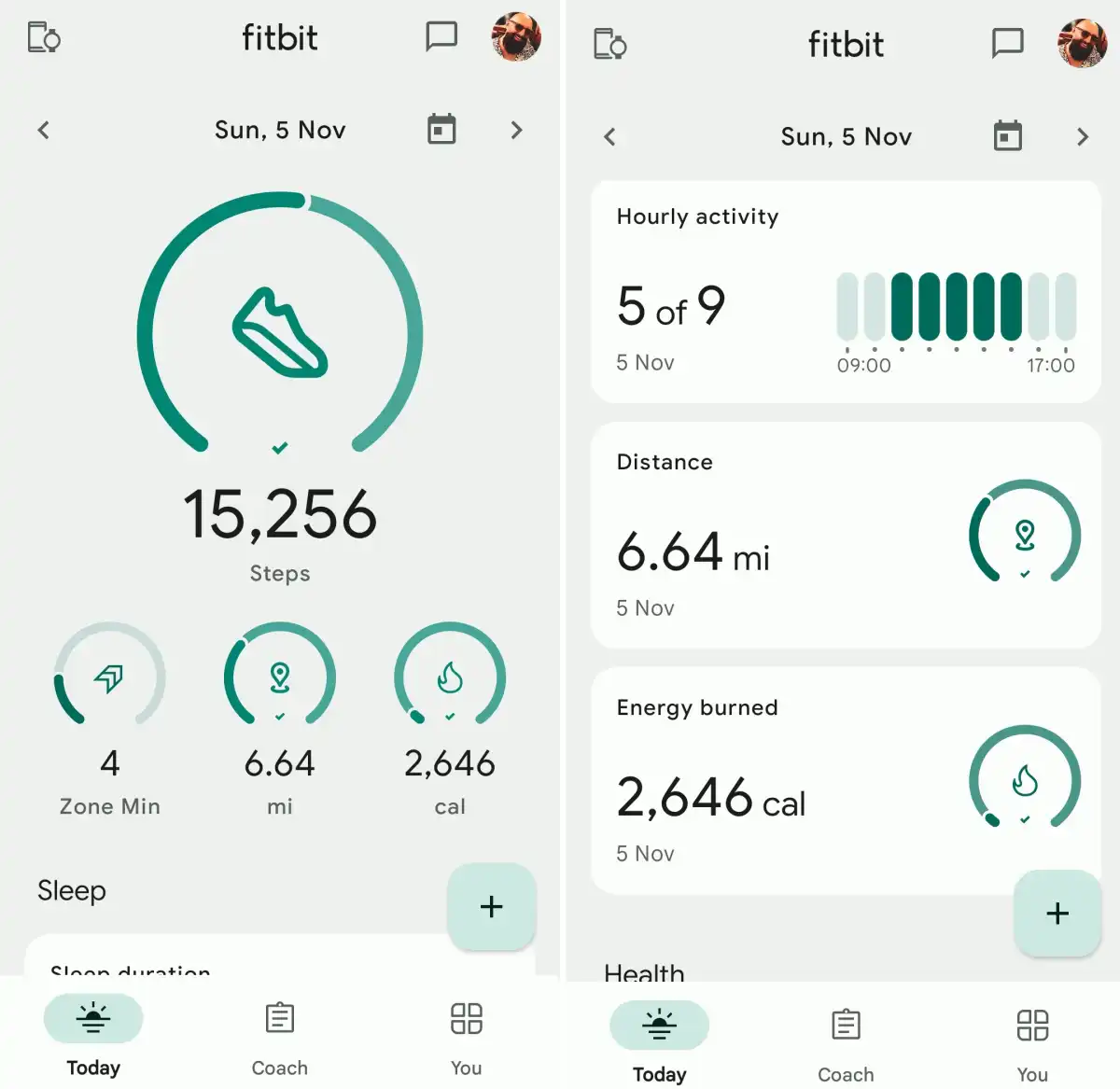
Price & Availability
The Fitbit Charge 6 is available in three fashionable colors: black, champagne gold/coral, and silver/white. Fitbit has introduced a slew of new bands to commemorate the occasion, including premium Horween Leather, Hook & Loop, and Woven styles.
The Fitbit Charge 6 comes with a higher price tag than its predecessor. It costs $159.95/£139.99, while the Charge 5 is still available for £129.99 on Fitbit’s own website.
You can buy it from Fitbit and Google stores as well as retailers such as Currys, Amazon and Argos in the UK while Best Buy, Lenovo and Amazon have it in the US.
One thing to also keep in mind is that you’ll need a Fitbit Premium subscription to access some of the best features of the Charge 6. This includes Daily Readiness, advanced sleep tracking and long-term health and data trends. Fitbit Premium costs $9.99 / £7.99 per month or $79.99 / £79.99 per year.
In terms of competition, the Xiaomi Mi Band 8 comes in at $40/£30 cheaper, sports a similar AMOLED display, and boasts blood oxygen monitoring which the Charge 6 lacks.
Should you buy the Fitbit Charge 6?
I found the Charge 6 does a lot of things right.
The build quality is excellent, strong heart-sensor smarts, and added Google services should surely appeal to both the Fitbit faithful and newcomers alike.
It’s just a shame that, even at this price, the GPS is flaky.
Specs
- Full-colour 1.04in AMOLED always-on display, 450 nits brightness
- Stainless steel body
- Interchangeable straps
- 40 exercise modes + Smarttrack
- EDA sensor + Scan app for stress management
- High and low heart rate notifications
- ECG app for AFib (irregular heartbeat) detection
- SpO2 (bloody oxygen saturation) monitoring
- Built-in GPS
- PurePulse 2.0 continuous heart rate tracking
- Water resistant up to 50m
- Active Zone Minutes
- Up to seven-day battery life
- Paired phone notifications
- Google Pay support (via NFC)
- Google Maps navigation
- YouTube Music controls
- Sleep tracking
- 37.64 grams
- Colors: Steel Obsidian/Black Aluminum, Porcelain/Silver Aluminum, Coral/Champagne Gold Aluminum


